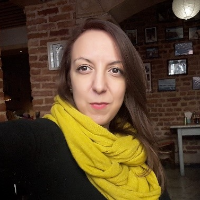2nd International Conference on
Optics and Laser Technology
October 22-23, 2025 | Online
Optics 2025

Institute of Optical Materials and Technologies, Bulgaria
Abstract:
Colorimetric
humidity sensors rely on the principles
of color change in response to fluctuations in humidity which is often due to the interaction between water
molecules and the sensor materials, change of the thickness and/or refractive
index and resulting in a shift in the optical properties of the material. These
sensors, mostly based on thin films of different materials, usually polymers or
inorganic substances, can reversibly change color under varying humidity
conditions. Easy detection provided by this method allows using
simple visual evaluation of the changes or via spectrophotometry
measurements of reflectance/transmittance spectra. In the process of developing such sensors, the main
and most important goal is achieving
linear dependence on the detected changes with
relative humidity RH and exhibiting a short response/recovery time, small
hysteresis, good reproducibility and stability. All these properties can be controlled by modifying
the materials used, e.g. by synthesis of polymers with different composition
and structures or via synthesis of composite materials. Having in mind that the
optical response of the sensor is different depending on the characteristics of
the thin films and the sensitive materials used, it is important to find the
most suitable conditions under which the color change is most significant. The creation
of such sensor covers both the selection and modification of the chosen
material followed by extensive investigation of sensor`s behavior under
changing humidity conditions. Possible
applications like optimizing workspaces with real-time environmental monitoring
and control of the conditions remotely via IoT, environmental and human body
monitoring, etc., are the development trends for futures advancements.
Biography:
Assoc. Prof. Dr.
Katerina Lazarova has been a scientist at the Bulgarian Academy of Sciences for
the last 10 years. In 2013 she began her doctorate in the field of photonic
crystals and optical sensors based on zeolites and porous materials. In 2016
she became a chief assistant at the IOMT-BAS and from 2019 to 2021 was a
postdoctoral fellow with a scholarship in the same field. Currently Dr. Lazarova is Associate
professor. Author of more than 40 articles, with awards for presentations in
scientific forums and participation in numerous scientific projects in
collaboration with other scientific organizations.
